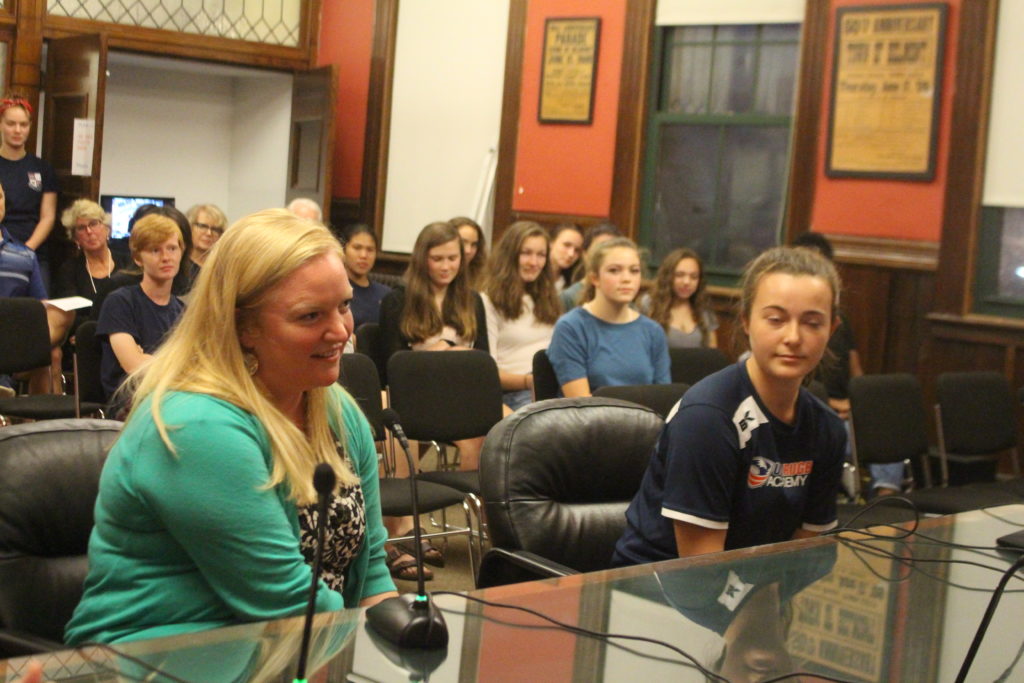Photo: Moderator Mike Widmer at the February 2016 Special Town Meeting.
A citizens’ petition seeking to elect members of the Planning Board brings to six the number of articles in the warrant for the Special Town Meeting next month.
The warrant – which was open and closed on Tuesday, Oct. 10 – will likely take more than the traditional single night to vote on the measures before the 290-plus member legislative body.
“It looks like we’ll need to plan for two nights to complete the meeting,” said Town Clerk Ellen Cushman as she accepted the planning board petition on Tuesday.
The articles are:
- Reports from town departments and committees, residents.
- Amendment to the General Bylaws: Revolving Funds,
- Appropriation for modular classrooms at the Burbank School ($2.6 million),
- Appropriation of funds ($370,000) for schematic design and authorization of a Building Committee for a Department of Public Works short-term option and a Police building short-term option,
- Appropriation of schematic design ($150,000) and authorization of a Library Building Committee.
- Citizens’ Petition to create an elected Planning Board.
The first night of the Special Town Meeting will take place on Monday, Nov. 13 at 7 p.m. at the Chenery Middle School. If needed, an additional night will be held on Wednesday, Nov. 15.



